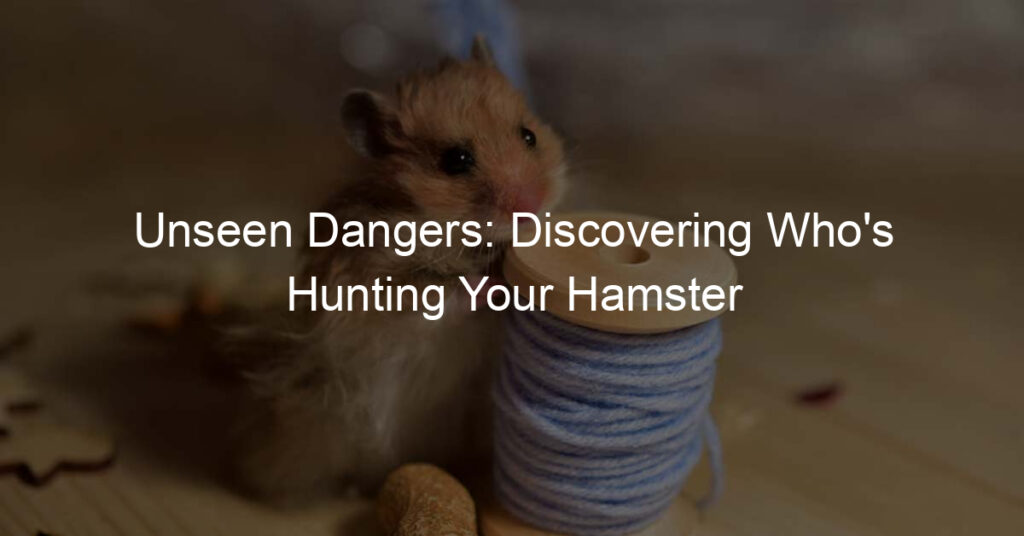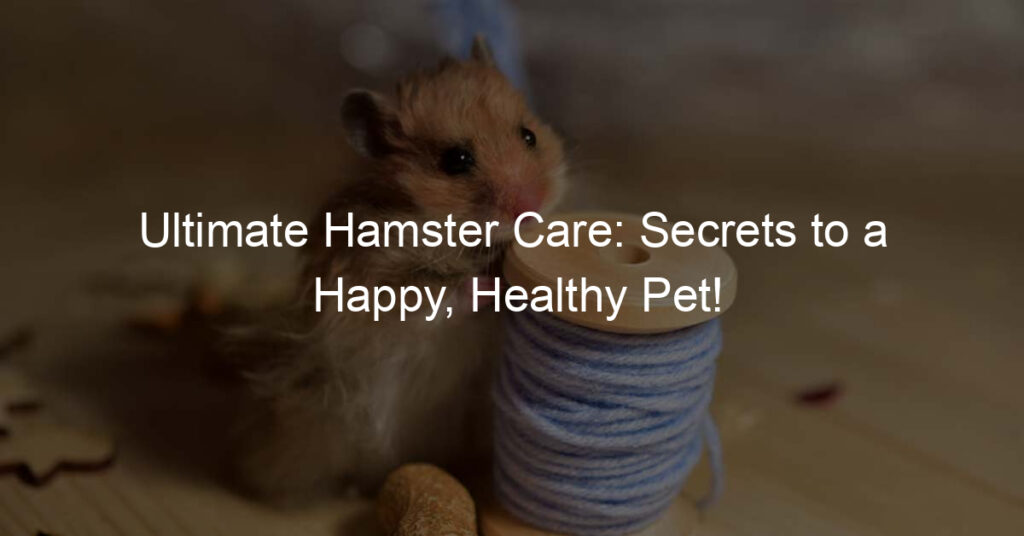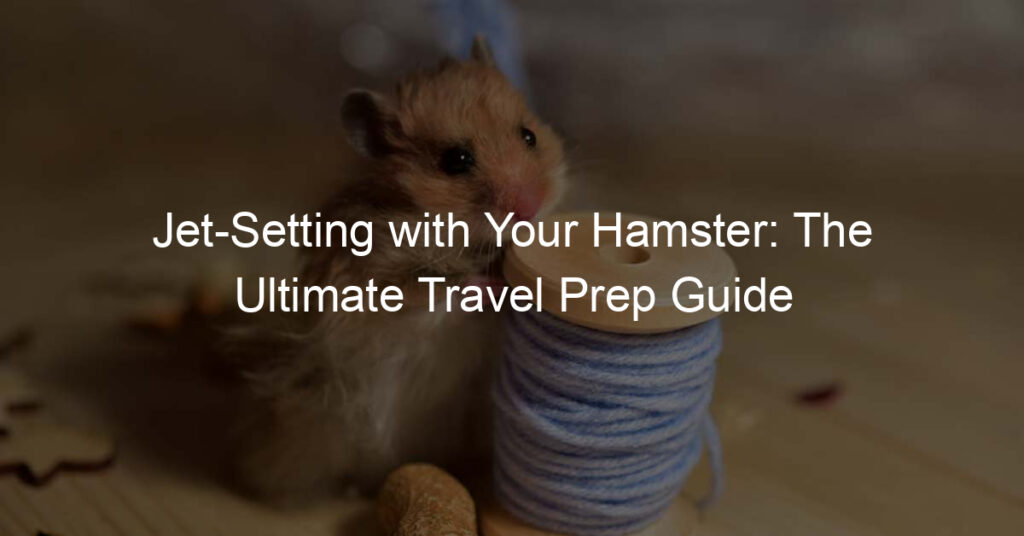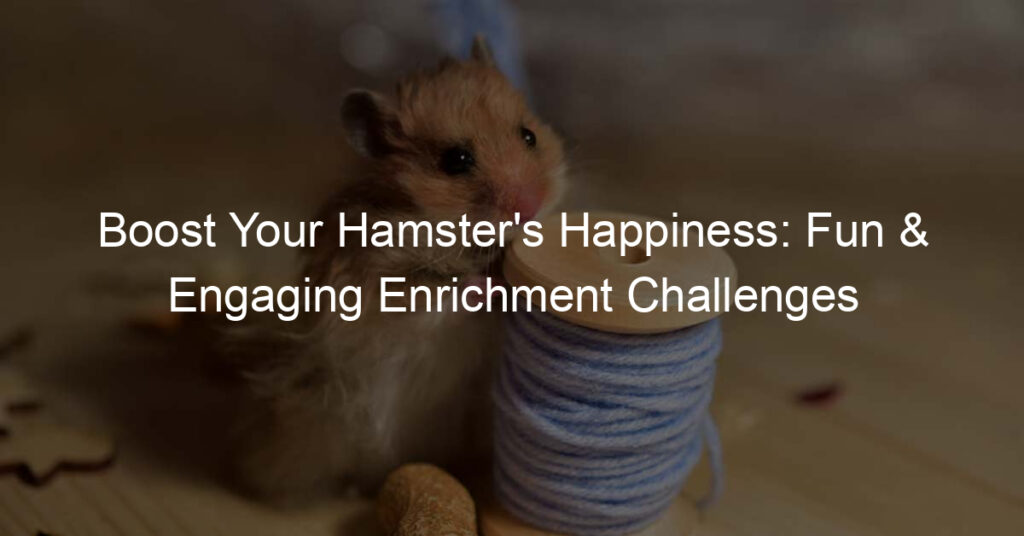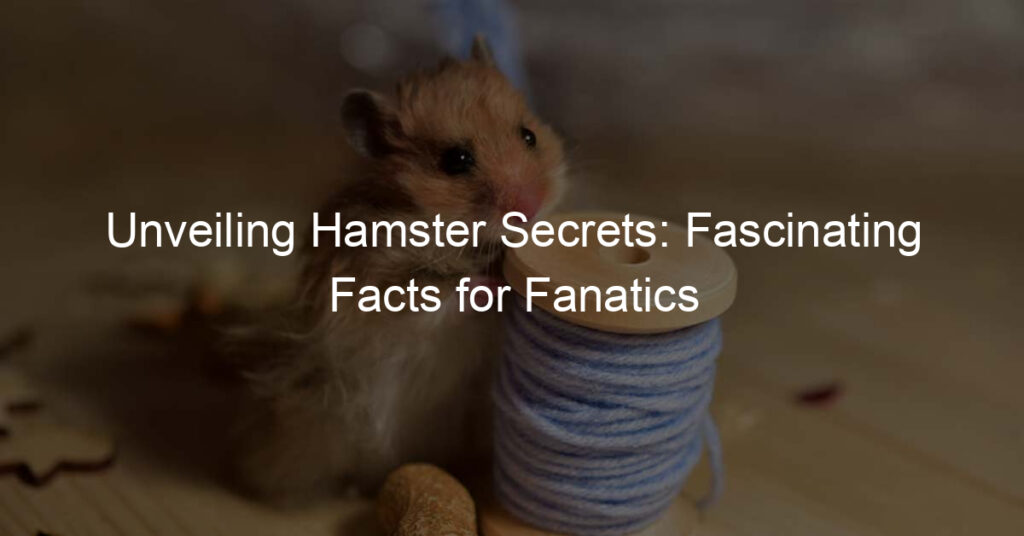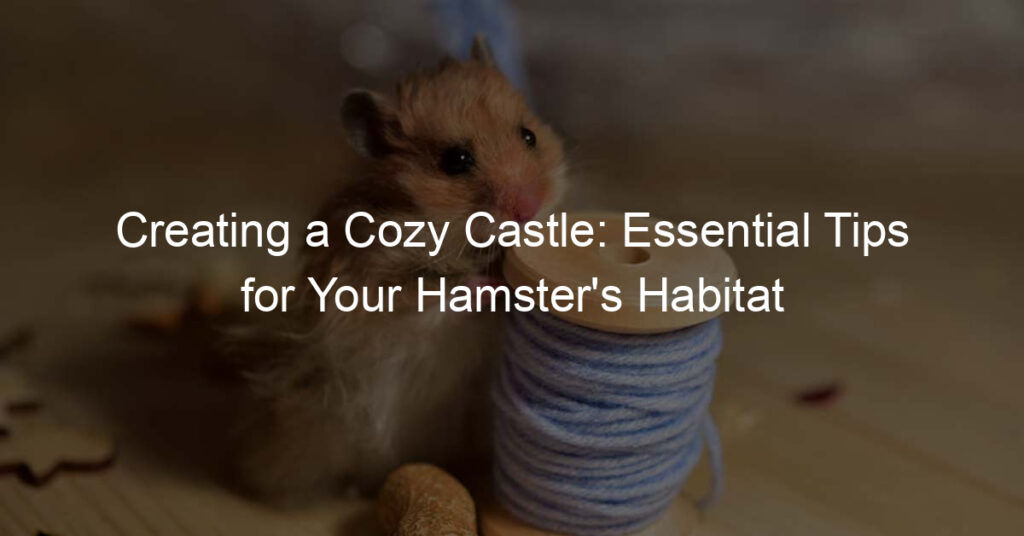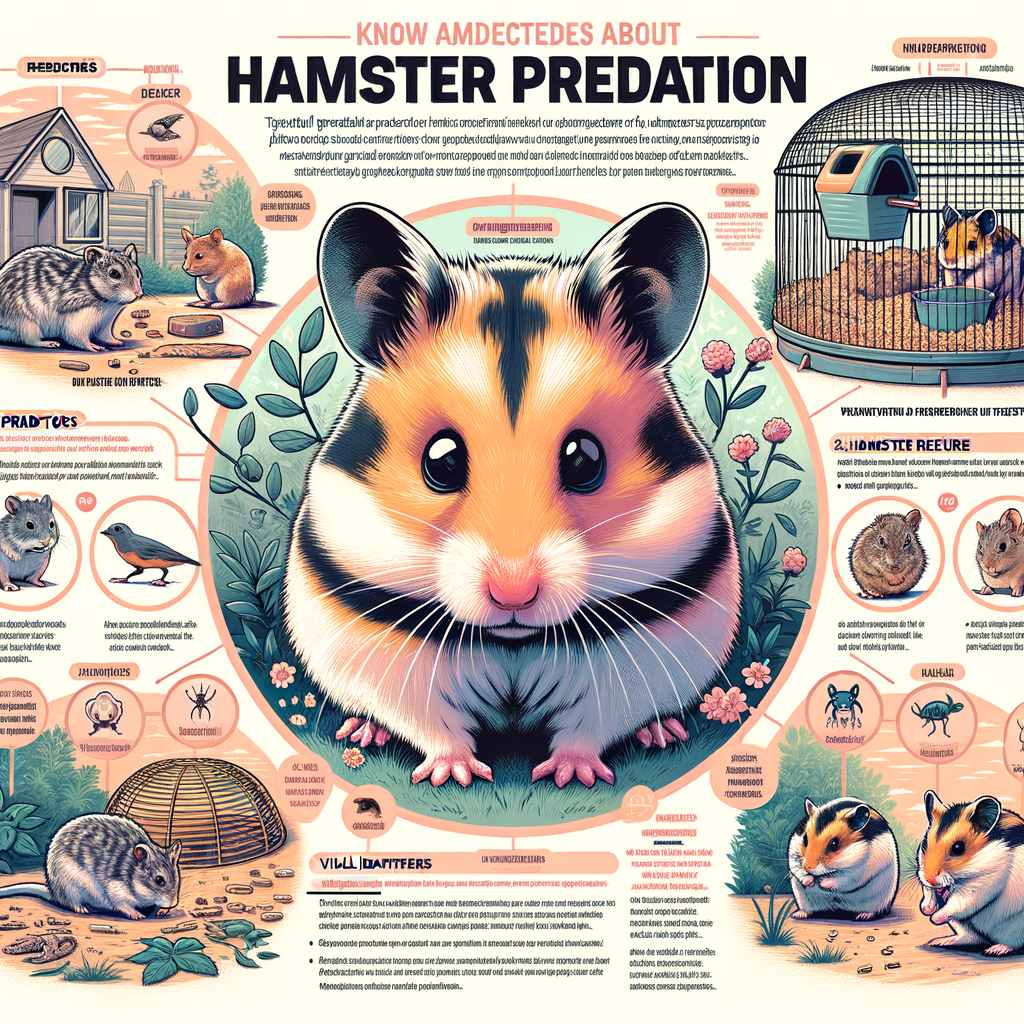
Introduction: The Unseen Dangers to Your Hamster
Hamsters are small, adorable creatures that make great pets. They’re easy to care for and can provide hours of entertainment with their playful antics. But like all pets, hamsters face certain dangers that we, as their caregivers, need to be aware of. These dangers are often unseen and can pose a serious threat to our furry friends’ health and well-being.
- Understanding the Importance of Hamster Safety
- Overview of Common Hamster Predators
Hamster safety is not something to be taken lightly. These small creatures are vulnerable to a variety of threats, some of which can be fatal. Ensuring your hamster’s safety involves providing a safe and secure living environment, feeding them a balanced diet, and protecting them from potential predators. It’s important to remember that hamsters are not just pets; they’re living beings that rely on us for their survival.
Hamsters, due to their small size, are prey for many larger animals. In the wild, they face threats from birds of prey, snakes, and larger mammals. In our homes, they can be at risk from other pets such as cats and dogs. Even other hamsters can pose a threat, as some species are known to be territorial and may attack others. Understanding these threats is the first step towards protecting your hamster.
By the end of this article, you’ll have a better understanding of the unseen dangers your hamster faces and how you can protect them. Remember, knowledge is power. The more you know about hamster safety, the better equipped you’ll be to ensure your pet lives a long, happy, and healthy life.
Identifying Hamster Threats
When it comes to keeping our beloved hamsters safe, it’s essential to understand the potential threats they may face. By identifying these dangers, we can take steps to protect our furry friends and ensure they live a long, happy life. Let’s delve into some of the common predators that pose a risk to hamsters.
Common Hamster Predators
Hamsters, being small and often defenseless creatures, can fall prey to a variety of predators. These threats can be categorized into three main groups: domestic pets, wild animals, and insects.
- Domestic pets: Cats and Dogs
- Wild animals: Birds of prey, Foxes, and Rats
- Insects: Ants and Spiders
While we may love our cats and dogs, they can pose a significant threat to hamsters. These pets are natural hunters, and their instincts may kick in when they see a small, scurrying creature like a hamster. Always supervise interactions between your pets and never leave your hamster alone with a cat or dog.
Wild predators can also pose a threat, especially if your hamster’s cage is located near a window or if you let your hamster play outside. Birds of prey, foxes, and even rats have been known to prey on hamsters. Always ensure your hamster’s cage is secure and out of reach from potential wild predators.
Even insects can be a danger to your hamster. Ants can invade hamster cages and food supplies, while some spiders may bite and cause health issues for your hamster. Regularly clean your hamster’s cage and keep an eye out for any signs of insect infestation.
By being aware of these common predators, we can take proactive steps to protect our hamsters and ensure their safety. Remember, a safe hamster is a happy hamster!
Hamster Predator Identification
Identifying a predator is crucial in ensuring the safety of your hamster. This process involves recognizing signs of a predator, understanding their behavior, and identifying their tracks and markings. Let’s delve into these aspects:
- Recognizing Signs of a Predator
- Understanding Predator Behavior
- Identifying Predator Tracks and Markings
One of the first signs of a predator is a change in your hamster’s behavior. If your hamster is usually active but suddenly becomes quiet and hides more often, it might sense a predator nearby. Other signs include unusual noises, like scratching or rustling, and signs of intrusion, such as disturbed bedding or damaged cage bars.
Predators often show specific behaviors when they are hunting. For example, cats and dogs might stare intently at the hamster’s cage, while birds of prey might circle above it. Wild animals like foxes and rats might attempt to dig or chew their way into the cage. Understanding these behaviors can help you identify a potential threat to your hamster.
Another way to identify a predator is by looking for their tracks and markings. Cats and dogs might leave paw prints around the cage, while birds of prey might leave feather traces. Wild animals like foxes and rats might leave scratch marks or droppings. These signs can help you identify the type of predator threatening your hamster.
In conclusion, understanding the signs, behaviors, and markings of predators can help you protect your hamster from potential threats. Remember, the safety of your hamster depends on your vigilance and quick action.
Natural Threats to Hamsters
Hamsters are small, adorable creatures that make great pets. However, they face various natural threats that can harm their health and well-being. One of these threats comes from the environment they live in. Let’s delve into some of these environmental dangers.
Environmental Dangers
There are several environmental factors that can pose a threat to your hamster’s health. These include:
- Extreme Temperatures: Hamsters are sensitive to temperature changes. Both extreme cold and hot temperatures can cause health issues. In the wild, hamsters live in moderate climates and are not adapted to extreme temperatures. Therefore, it’s important to keep your hamster’s cage in a place where the temperature is stable and within a safe range.
- Unsafe Bedding Materials: Not all bedding materials are safe for hamsters. Some can cause respiratory problems or skin irritation. For instance, cedar and pine shavings contain oils that can harm your hamster’s respiratory system. It’s crucial to choose bedding that is safe, comfortable, and non-toxic for your hamster.
- Improper Diet: Hamsters need a balanced diet to stay healthy. Feeding them the wrong foods can lead to obesity, diabetes, and other health problems. A proper hamster diet should include a variety of fruits, vegetables, and high-quality hamster pellets. Avoid feeding your hamster sugary or salty foods.
Understanding these environmental dangers can help you provide a safer and healthier environment for your hamster. Remember, a happy hamster is a healthy hamster.
Health Threats
While hamsters are generally healthy pets, they can still face a number of health threats. Let’s explore some of these threats and how we can prevent them.
- Common Diseases and Illnesses
- Impact of Stress and Fear
- Importance of Regular Vet Check-ups
Hamsters, like any other pet, can suffer from a variety of diseases and illnesses. Some of the most common include wet tail (a severe diarrheal disease), respiratory infections, and tumors. Wet tail, for instance, can be caused by stress or poor living conditions and can be fatal if not treated promptly.
| Disease | Symptoms | Prevention |
|---|---|---|
| Wet Tail | Diarrhea, lack of appetite, lethargy | Proper hygiene, stress management |
| Respiratory Infections | Sneezing, difficulty breathing, discharge from nose or eyes | Good ventilation, avoid drafts |
| Tumors | Unusual lumps, weight loss, changes in behavior | Regular vet check-ups |
Stress and fear can have a significant impact on your hamster’s health. These feelings can weaken their immune system, making them more susceptible to diseases. It’s important to provide a safe, comfortable environment for your hamster and to handle them gently to reduce stress.
Regular vet check-ups are crucial for your hamster’s health. These visits can help detect any potential health issues early, increasing the chances of successful treatment. Additionally, vets can provide valuable advice on proper hamster care and nutrition.
By understanding these health threats and taking preventative measures, you can help ensure your hamster lives a long, healthy life.
Protecting Hamsters from Predators
Hamsters are small, adorable creatures that make great pets. However, they can also be vulnerable to various predators. It is crucial to take steps to protect your hamster from these threats. One of the most effective ways to do this is by creating a safe environment for your hamster.
Creating a Safe Environment
Creating a safe environment for your hamster involves several factors. These include choosing the right cage and location, proper handling and care, and safe interaction with other pets. Let’s delve into each of these aspects.
- Choosing the right cage and location: The cage you choose for your hamster is its primary defense against predators. It should be sturdy, secure, and large enough for your hamster to move around comfortably. The location of the cage is also important. It should be placed in a quiet, safe area away from other pets and potential threats.
- Proper handling and care: Hamsters are delicate creatures and need to be handled with care. Avoid dropping them or handling them roughly as this can lead to injuries. Regularly clean the cage and provide fresh food and water to keep your hamster healthy and happy.
- Safe interaction with other pets: If you have other pets in the house, it’s important to supervise their interactions with your hamster. Larger pets like dogs and cats can pose a threat to your hamster. Always ensure that your other pets are well-trained and gentle around your hamster.
In conclusion, protecting your hamster from predators involves creating a safe and secure environment. By following these tips, you can ensure that your hamster stays safe and lives a long, happy life.
Preventive Measures
Protecting your hamster from predators involves more than just creating a safe environment. It also requires proactive steps to deter potential threats. Here are three key preventive measures you can take:
- Using Predator Deterrents
- Regular Monitoring and Supervision
- Emergency Preparedness
One of the most effective ways to keep your hamster safe is by using predator deterrents. These can range from natural solutions like certain plants that predators dislike, to more advanced options like ultrasonic devices. These devices emit a high-frequency sound that is unpleasant to predators but harmless to your hamster. Remember, the goal is not to harm the predators, but to discourage them from approaching your pet’s habitat.
Keeping a close eye on your hamster’s environment is another crucial preventive measure. Regularly check for signs of intrusion, such as claw marks or disturbed bedding. If you have other pets in the house, make sure they are not causing stress to your hamster. Supervision is particularly important during the hamster’s active hours, which are usually at night.
Despite your best efforts, emergencies can still occur. Therefore, it’s important to be prepared. Have a safe, secure place to move your hamster in case of a threat. Keep a first aid kit on hand in case your hamster gets injured. And always have the contact information for a vet who specializes in small animals. Being prepared can make all the difference in a crisis situation.
In conclusion, protecting your hamster from predators requires a combination of creating a safe environment and taking proactive preventive measures. By using predator deterrents, regularly monitoring your pet’s environment, and being prepared for emergencies, you can help ensure your hamster’s safety and well-being.
Conclusion: Ensuring Your Hamster’s Safety
As we reach the end of our discussion, it’s crucial to remember that the safety of our little furry friends is in our hands. Let’s take a moment to recap and reinforce what we’ve learned about hamster safety.
- Recap of hamster predators and threats: We’ve learned that hamsters face threats from various predators, including cats, dogs, and birds of prey. Even other hamsters can pose a threat. Additionally, environmental hazards such as small spaces where a hamster could get stuck or high places from which they could fall are also significant threats.
- Importance of proactive hamster protection: It’s not enough to react to threats as they occur. Proactive hamster protection involves creating a safe environment for your hamster from the start. This includes a secure cage, safe toys, and a diet that supports their health. Remember, a healthy hamster is a happy hamster!
- Encouragement for continuous learning and vigilance: The world of hamsters is vast and constantly evolving. New research and insights can help us better care for our pets. Stay vigilant and continue learning about hamster care. Your hamster depends on you for its safety and well-being.
Let’s not forget that our hamsters rely on us for their safety. By understanding the threats they face, being proactive in their protection, and continuing to learn about their needs, we can ensure they live a happy and healthy life.
Remember, the safety of our hamsters is a journey, not a destination. Let’s continue to learn, adapt, and provide the best care for our furry friends.

